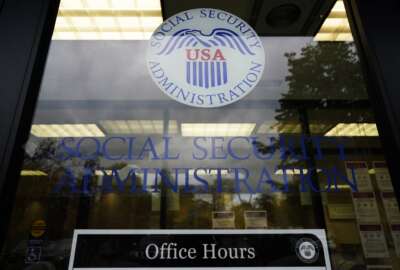Issa bill would open FEHBP to all Americans, but at what cost?
Rep. Darrell Issa (R-Calif.) introduced a bill that would open up the federal health program to all Americans, but one federal employee union has come out to op...
wfedstaff | April 17, 2015 5:42 pm
The chairman of the House Oversight and Government Reform Committee wants all Americans to have access to the same health program as most federal employees.
Rep. Darrell Issa (R-Calif.) introduced H.R. 3319, the Equal Healthcare Access Act, today, which would open up the Federal Employees Health Benefit Program (FEHBP) to all U.S. citizens.
“The Equal Healthcare Access Act offers Americans access to the same health insurance plans long enjoyed by Members of Congress and their families,” Issa said, in a release. “This is a free market approach to healthcare with government playing the very limited role of helping small businesses and individuals come together to get a better price for healthcare — much like larger businesses can already negotiate on their own.”
The bill is co-sponsored by Reps. Mick Mulvaney (R-S.C.) and Rep. William Lacy Clay (D-Mo.).
FEHBP is open to most federal employees, retirees and their survivors, offering a wide selection of health plans to choose from. The Office of Personnel Management offers specific information about the services provided by FEHBP on its website.
“The American people should have as easy a consumer experience as federal employees do,” Issa said. “People can visit the OPM’s website to see how easy it would be for Americans to compare health insurance prices under this system.”
Issa added that opening up the health plan would allow the general public the chance to pick from the more than 230 plan choices offered by FEHBP. Citizens would have improved access and choice to physicians, since 99 percent of all doctors accept FEHBP plans, and citizens would have a clearer picture of their out-of-pocket expenses.
Benefits consultant Walton Francis said Issa’s bill is not a new idea.
“It’s been proposed a number of times over the years,” he said. “The notion is that it’s a model healthcare plan, why limit it to feds? Why not give everybody a chance on it?”
Francis said there were many pluses and minuses in such a plan. A functioning program is in place and, in theory, people could join it.
FEHBP is not perfect as is and changes would have to be made in order for people outside the federal government to join it.
“You can imagine other people joining the program if they’re in their own risk pool, that is, if their costs, premiums and payments are all calculated entirely separately from federal employees,” he said. “That would affect federal employees. The health plans that are in federal employee program might or might not agree to do that, so there might be a shake-up. It’s hard to know how serious to take this.”
Ed Zurndorfer, a registered employee benefit consultant and a licensed insurance agent, said federal employees would be the big losers in this legislation.
“When you add more people to the potential pool of enrollees in the plan, the greater the chance that the insurance company is going to have to raise their rates, especially if there’s no underwriting requirement,” Zurndorfer said. “Under current law, federal employees can enroll in any plan they want, any preexisting conditions are not going to result in a higher premium if they’re enrolled.”
If FEHBP is opened up nationwide, Zurndorfer said chances are good that the prices would go up for all enrollees — both current and retired feds.
Under current law, federal employees and retirees pay an average of between 25 percent and 28 percent of the total premiums, with the government picking up the rest.
“Is that going to be the case if this plan goes nationwide?” Zurndorfer asked. “Is the government going to be paying the same percentage of the premiums for somebody who’s not a federal employee or retiree? I highly doubt it.”
What about those already enrolled in the FEHBP? Would the government continue to pay the bulk of the premiums?
“Any time you open up any kind of benefit that is unique to the federal employee workforce, it’s going drive up the cost of the program,” Zurndorfer said. “I cannot see any possible benefit for the average employee or annuitant by opening up this program to any citizen who wants to enroll in this program.”
Zurndorfer wondered if this was just an attempt to substitute the FEHBP for the healthcare exchanges introduced under the Affordable Care Act.
“Granted, there are problems right now, but I’m sure these problems are going to be ironed out,” he said. “They’re going to eventually get HealthCare.gov up and running to the point that anybody can get enrolled in it with very little difficulty. What is the purpose of having the federal employees’ health insurance program, which has been one of the best benefits … to say, ‘OK, let’s open up to anybody that wants to?’ I don’t thing a lot of thought went into this in terms of cost to the average employee, what it’s going to mean to the agencies in terms of are they going to have to put in more money because the costs of programs is going to go up? Will the employees continue to have this benefit in which the agencies continue to pay 72 to 75 percent of the premiums?'”
The National Treasury Employees Union has already come out in opposition to the legislation.
“Federal employees and retirees should not be put in the position of subsidizing non-employee health care costs,” NTEU National President Colleen M. Kelley said in a statement. “It is no more appropriate to open the FEHBP in this manner than it would be to open other employer-sponsored health insurance plans to non-employees. No one is asking General Motors, the State of California CalPERS Program or any other large employer-sponsored health insurance plan to be open to non-employees.”
Kelley added NTEU supported efforts to extend health care coverage to all citizens but not at the expense of federal employees and retirees.
Copyright © 2024 Federal News Network. All rights reserved. This website is not intended for users located within the European Economic Area.
Michael O’Connell is senior digital editor of Federal News Network optimizing content for the best user experience. Follow @moconnellWFED
Follow @moconnellWFED






